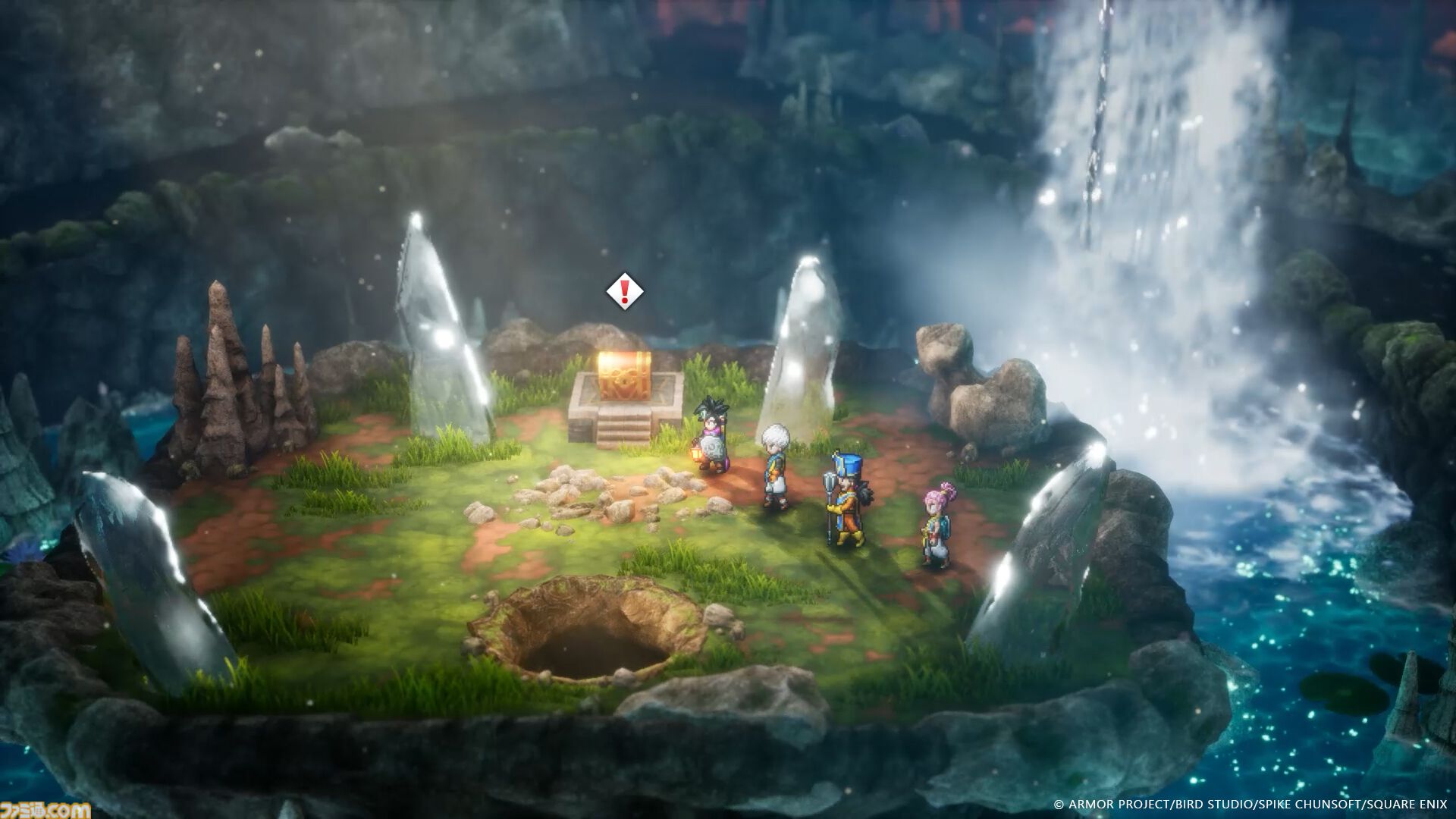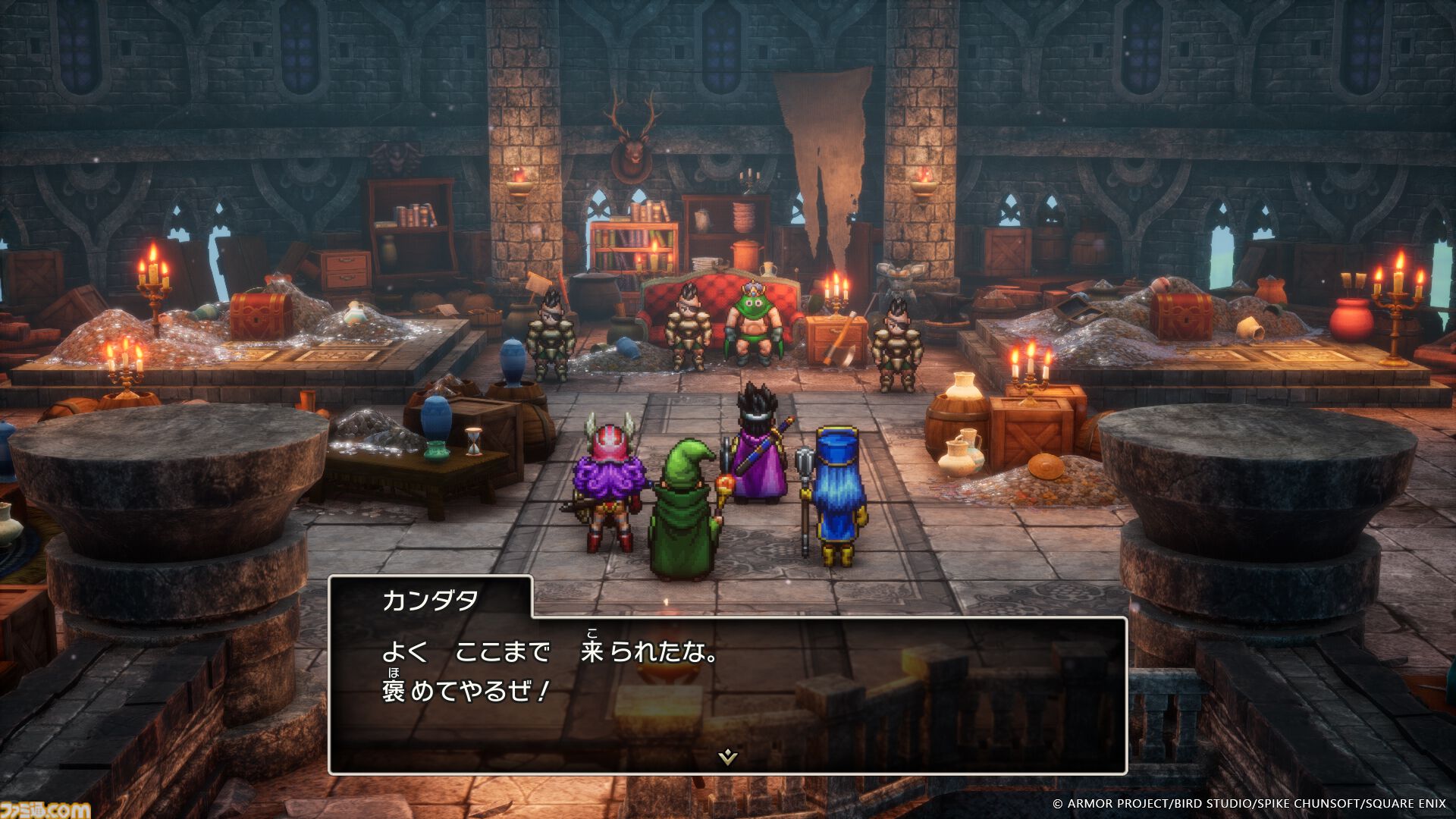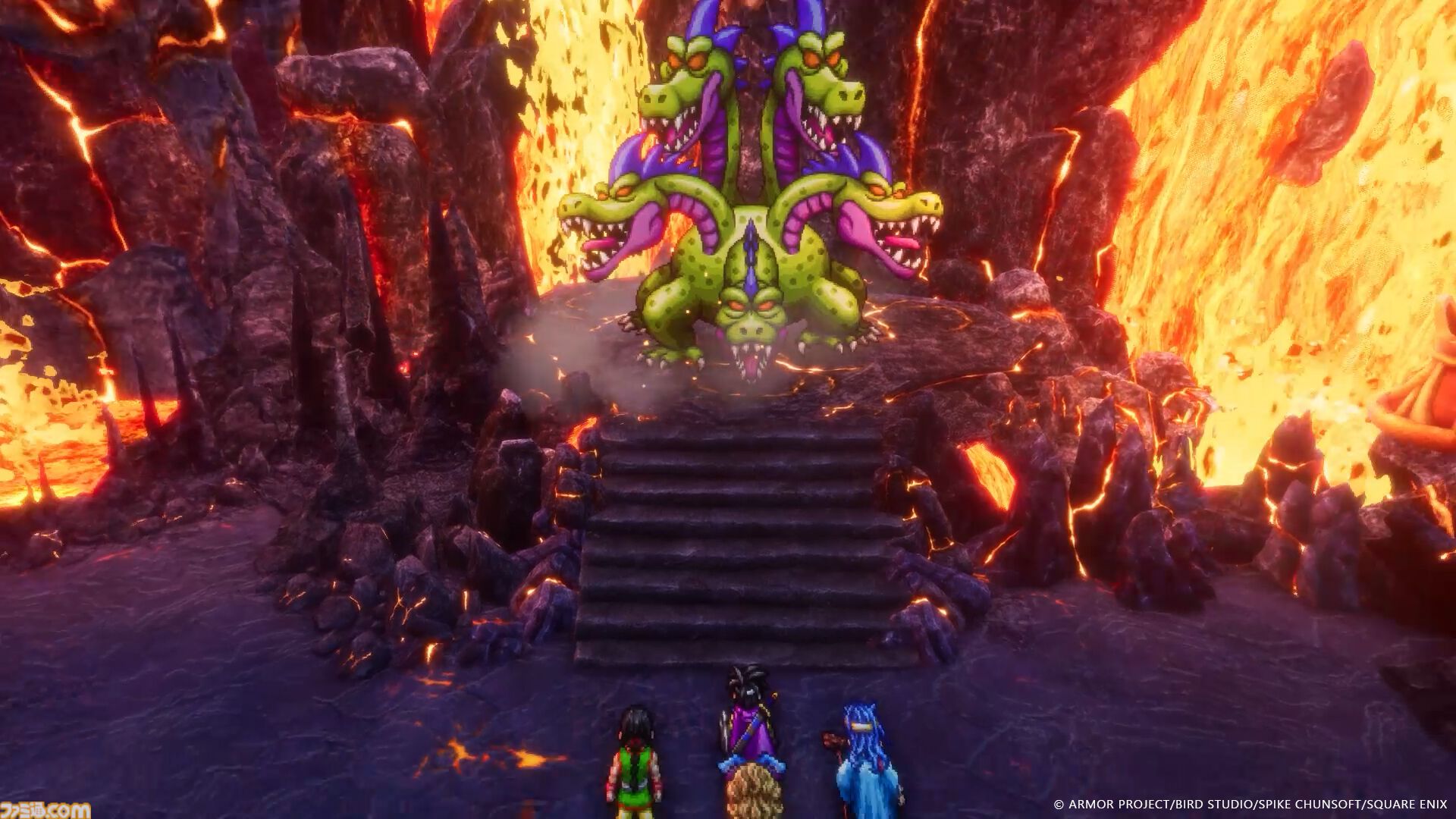Experience the very beginning of the HD-2D version of "Dragon Quest III: And into the Legend...". It pursues the convenience of modern games while retaining the atmosphere of the original version.
_The new Dragon Quest III has been adapted for modern times while retaining the original gameplay.
This time, we were able to play from the point where the hero, the protagonist, formed a party at Luida's Tavern, descended into the castle town of Aliahan, and went through the Cave of Izanai. The party members were a hero, a warrior, a wizard, and a priest, and their levels were 9 to 10. Since this was a trial run within a limited time, it seems that the levels of the party members were set a little higher.


If you've played DQIII, you'll see familiar scenes rendered in HD-2D.
The first thing that catches your eye when you start playing is the graphics made possible by HD-2D . The field is depicted in 3D graphics that are comparable to the latest games, and when you actually walk around, it is not flat, but has a lot of undulations. The experience of moving around an undulating field, which has not been seen in previous DQIII games, is quite refreshing.
In addition, DQIII features areas based on various regions in the real world, and according to producer Masaaki Hayasaka, they made full use of HD-2D to express the characteristics of each region, with the keyword of "world travel."

Not only the mountainous areas, but also the plains are quite uneven.

As time passes, the background changes brightness and other aspects, from daytime to evening to night. Some of the town's facilities are closed.

The glitter on the field contains buried treasure, which motivates exploration.
The characters, all three-dimensionally deformed, are drawn in great detail. One key point is that the appearance of party members changes depending on the weapon they are equipped with.

In this game, you can see the backs of your party members while selecting battle commands. The warrior in this screenshot in particular seems to have a lot of details...
The gameplay is basically the same as the original Famicom version, where you collect information from the residents of the villages and towns you visit, explore fields and dungeons based on that information, defeat random monsters along the way, level up, and achieve your goals... repeating this cycle. Of course, the ultimate goal is to defeat the Demon King. However, while the basic cycle remains the same, this game has several features that make it easier to play as a modern game.


The easiest way to understand this is the "mini-map" that appears in the upper right corner of the screen , which allows you to see at a glance the facilities in the towns surrounding the protagonist's current location, the entrances and exits of dungeons, and more.

Inn and Weapon Shop icons are displayed on the minimap
The menu screen also displays your current objectives and the specific steps you need to take to achieve them. In addition, past conversations can be recorded as "memories" and can be reviewed later. In the past, you would write down things that seemed like hints on paper, but that's no longer necessary.

Your current objectives and other information are displayed under the minimap.

The information I heard from the town girl...

You can record it as a memory and look back on it.
In battle, the message speed and overall battle speed can be changed to three levels. In the DQ series, it is common to defeat enemies repeatedly to earn experience points and level up characters, so it is nice to be able to shorten the time per battle.

Battle speed settings. Can be changed during battle with the [L1] and [R1] buttons.

There is also a "Plan" command that was not present in the Famicom or Super Famicom versions of DQIII. This should go without explanation for those who have played any of the numbered titles after DQIII, but it is a command that determines the course of action each party member will take in auto battle.
The dungeon map shows the entire floor and area the protagonist is currently in from the beginning. For example, dead-end passages can be seen just by looking at the map, so I thought it was too helpful at first, but I was strangely convinced by the staff's explanation that "Even if you know it, there are quite a few people who want to go there." I think I will probably explore when I play it privately.

It's very convenient because you can see the map of the entire area from the beginning.
For movement, you can dash by pressing the [O] button (for PS5 DualSense). In addition, the spell "Lula" and the item "Chimera's Wings", which instantly transports the party to a specific point, can now be used even in places with ceilings. This allows you to use Luula and Chimera's Wings in a similar way to the fast travel that is common in recent RPGs.

I'm glad I don't have to hit my head on the ceiling anymore, but I still feel a bit unsatisfied...
In addition, voices have been added to the event scenes, and orchestral music has been used . Although I was unable to confirm the voices during this playthrough, as previously reported, the protagonist's battle voices will be provided by voice actors Nobuyuki Hiyama and Yuko Minaguchi. Please wait for further information.

The battle voice of Looks A is Nobuyuki Hiyama

Looks B's battle voice is Yuko Minaguchi
According to producer Hayasaka, the game has been finely tuned, including the implementation of a tutorial. Regarding the story, episodes have been added under the supervision of Yuji Horii, the creator of the DQ series. Hayasaka commented in the video released at the media trial that "Since this is a remake, first and foremost we have to please the fans of the original," but "we aimed to make it something that fans of the series who have never played DQIII and people who are new to the DQ series can pick up."

Tutorials are displayed during gameplay

Saving is now possible by "prayer" at local churches, rather than at the king's.
When I actually played this game, I got the impression that it retained the atmosphere of the original version to the maximum extent possible, while eliminating as much of the stress that you feel when playing games from the Famicom/Super Famicom era as possible. I'm sure there are some who say, "That inconvenience is good," but I prefer to be able to play conveniently and comfortably without having to think about anything extra. This time, I was only able to check out the bare minimum of the game by rushing from the castle town of Ariahan to the Cave of Izanai in less than an hour, so I would like to spend more time next time to enjoy this game.

In the first half of the game, I explored every nook and cranny, but I was informed that I didn't have enough time, so in the second half, I made full use of dash movement and the "run away" command in battle. I made it to the Cave of Izanai safely, but to be honest, I wanted to explore more thoroughly.
Famitsu: Latest information on the HD-2D version of "Dragon Quest III: And into the Legend..." has been released. The main character, story, battles and other aspects of "The Legend of Loto" will be reborn in a new form!
The world of DQIII depicted in HD-2D
By combining pixelated characters with three-dimensional backgrounds and adding visual effects and high-definition effects, the series creates a visual expression that is both nostalgic and new.


This game is presented in HD 2D, and anyone who has played the original, as well as the ported and remake versions, will be able to enjoy the new "DQIII."
[STORY]
One day on his 16th birthday, the protagonist, the son of Ortega, a brave warrior from the small country of Aliahan , is told of an important mission by the king. That is, to carry out the will of the late Ortega and defeat the demon king Baramos, who appeared from the land of darkness. What is the surprising fate that awaits the protagonist on his journey to save the world ...?
The protagonist of this work is the son of Ortega, who was called the "Hero of Aliahan." On the morning of his 16th birthday, he sets out on a journey to carry out his father's will and defeat the demon king Baramos.




Adventure Stage and New Elements
In addition to towns and castles, there are also caves, towers, etc. in the field. First, visit the towns and castles, listen to the stories of the residents, and solve the various incidents that occur in each area.

The world map of "DQIII".
The protagonist was born and raised in Aliahan, a small island nation located in the southern part of the world map. From here, he sets out on a journey following in the footsteps of his father, Ortega.

There are various terrains, such as plains, forests, deserts, snow fields, rocky mountains, etc. What secrets lie in the pyramid towering before you?

Once you have a boat, you will be able to travel freely across seas and rivers, greatly expanding the scope of your adventures.

As you stroll through the field, the time changes from day to evening and then to night.

Talking to the residents in towns and castles can give you hints and important information that will help you on your adventure.

You can also obtain powerful equipment and important items in dungeons such as caves and towers.

There are monsters in the town too... What on earth could this be?
New skills that can be used in battle have been added
In the Super Nintendo version of "DQIII ," there were special skills that could be used on the field, but in this game, special skills that can be used in battle have been added. This is expected to significantly change the balance of battles, but will it really be the case?



We're also curious about the rumored "new job"... let's wait for further news!

Kandata is a familiar character in the series, a villainous but lovable master thief. His first appearance scene is also worth watching.

At the very depths of the cave where magma flows, a strong enemy may be waiting for you. If you don't explore carefully and don't use up too much MP, you'll have a tough fight.